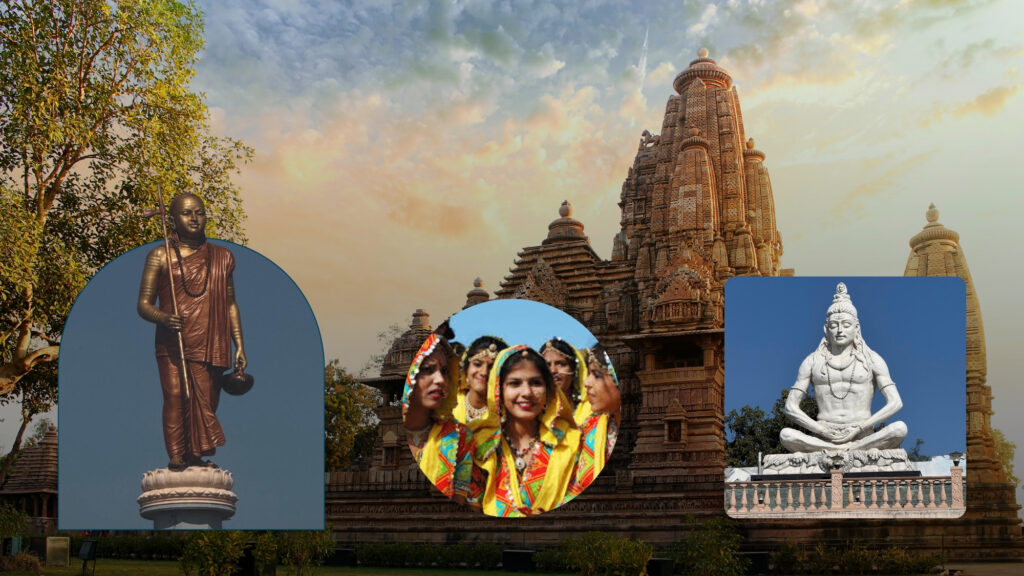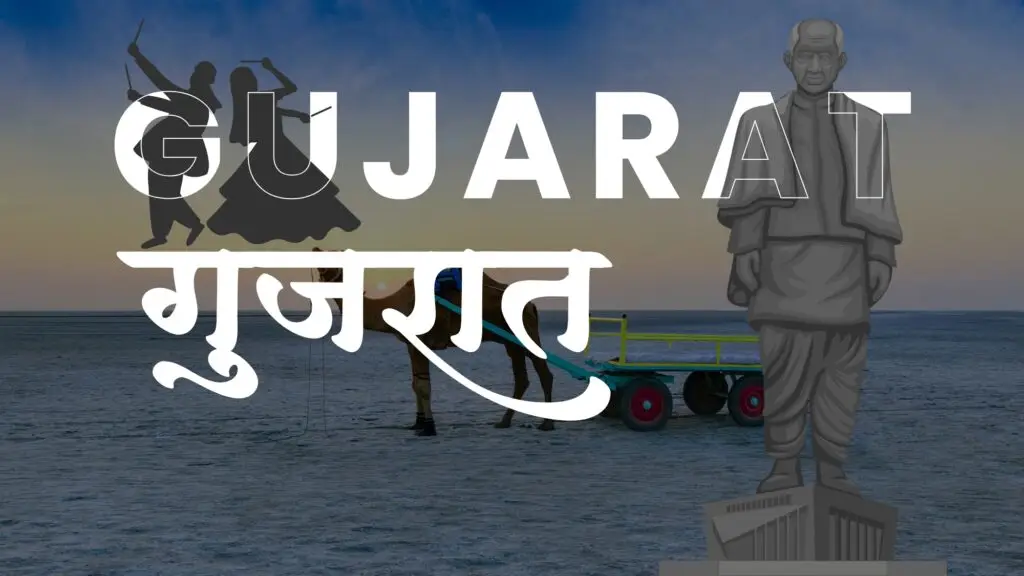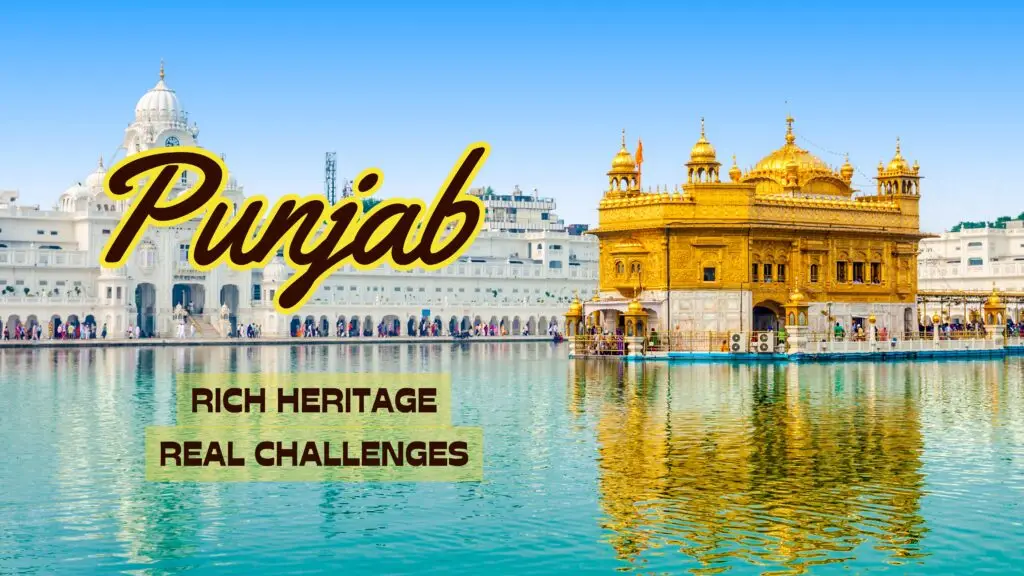Madhya Pradesh, the “Heart of India” because it’s in the middle of the country, is a state with a very old history, amazing natural beauty and a mix of cultures. It’s a place where ancient people left their marks, where huge tigers roam in green forests and where traditions live on the new growth. From its holy riverbanks to its busy factory areas, It gives you a special and deeply moving experience that shows the true spirit of India.
Let’s take a long drive through this beautiful state, looking at its famous past, its active present and its big plans for the future.

Madhya Pradesh’s Old and Famous History
The history of Madhya Pradesh goes back thousands of years, making it a main area of India. Very old rock shelters at Bhimbetka (a UNESCO World Heritage site), with their ancient cave paintings, show that people lived here a very long time ago. These shelters offer a clear look into the start of human life, showing art that tells about the daily lives of the first people.
This area has been home to many strong kingdoms. It was a big part of the Mauryan Empire, with King Ashoka himself serving as a governor in Ujjain. After the Mauryas, different groups like the Guptas and later, the powerful Paramaras of Malwa, the Chandellas of Khajuraho and the Tomars of Gwalior, all left their special building styles and cultural marks. In the middle ages, the Delhi rulers and later the Mughals had an impact. But the biggest change came from the Marathas, especially the Holkars of Indore and the Scindias of Gwalior.
After India became free in 1947, Madhya Pradesh was formed on November 1, 1956. This was done by joining many small kingdoms and old British areas, with Bhopal becoming its capital. This history of different rulers and communities has made its culture unique, mixing styles from Rajputs, Marathas, Mughals, and tribal groups.
Festivals and Arts: That Describe Madhya Pradesh
The culture of Madhya Pradesh is a lively picture of its mixed history and different people, including a big number of tribal groups.
Festivals
The state celebrates many festivals with full excitement. Besides big national holidays like Diwali and Holi, there are special local events like the Khajuraho Dance Festival, the Malwa Utsav and Lokrang that bring in large crowds. Tribal festivals that deeply connected to nature, are also widely celebrated, showcasing a special cultural experience.
Arts & Crafts:
Madhya Pradesh is like a treasure chest of old crafts.
- Chanderi Sarees from Ashoknagar and Maheshwari Sarees from Maheshwar are famous worldwide for their detailed weaves, soft feel and unique borders.
- Bagh Hand Block Prints from Dhar are famous for their special and unique designs and eco-friendly colours.
- Batik Print is a method of dyeing cloth using wax from Ujjain is an old craft with bright patterns.
- Zari-Zardozi Work is strong in Bhopal and Gwalior.
- Stone Carving is important, with artists still doing the traditional work seen in the temples of Khajuraho and the buildings of Orchha and Gwalior.
Metalwork, pottery, Dhokra art and different tribal arts like Bhil paintings and Gond art, all add to the state’s rich art scene.
Music & Dance:
The folk music and dances are changing from one area to another. The Malwa area has its own special folk songs, while the Baghelkhand and Bundelkhand areas have unique forms like Karma, Gaur and Rai. Classical music also has followers in cities like Gwalior, which is home to the Gwalior Gharana style of music.
Nature’s Gift
Madhya Pradesh really lives up to its name “Heart of India” with a varied landscape:
- The Vindhya and Satpura mountain ranges run across the state. That make a big part of its shape and views.
- Large areas of the Malwa Plateau cover the western part, known for its dark soil.
- Big rivers like the Narmada, Tapi, Chambal, Betwa, Sone and Shipra flow through the state, creating fertile lands and helping its farming economy.
- Pachmarhi, hidden in the Satpura range, is a popular hill station known for its waterfalls, old caves, and green nature.
- The stunning Marble Rocks of Bhedaghat near Jabalpur, where the Narmada River cuts through tall white marble cliffs, offer a wonderful natural sight.
Madhya Pradesh is proudly called the “Tiger State of India,” with the most tigers in the country. About 30% of its land is covered by forests, providing important homes for animals. The state has an amazing 12 National Parks, over 20 Wildlife Sanctuaries, and 3 Biosphere Reserves, making it a heaven for people who love nature and animals.
- Kanha National Park: One of India’s biggest and best-managed tiger areas, known for its efforts to save the Barasingha (swamp deer) and its thick bamboo and sal forests.
- Bandhavgarh National Park: Famous for having the most tigers in India, making it easy to see tigers.
- Pench National Park: The place that inspired Rudyard Kipling’s “The Jungle Book,” known for its many kinds of plants and animals and its tiger population.
- Panna National Park: A tiger area that is getting better, also home to many vultures.
- Satpura National Park: Known for its special walking safaris and many different kinds of plants and animals, including rich forests.
- Kuno National Park: Recently got attention for bringing cheetahs from Africa back here.
Even with its many natural gifts, Madhya Pradesh faces problems like falling groundwater levels, cutting down forests (even if there’s a lot of forest cover, problems remain), and dirty rivers due to factory waste and city pollution. The state government is actively involved in saving nature, promoting smart water use, planting more trees, and making rules to protect its valuable natural places.
The Economic Driver
Farming has always been the main way people make a living in Madhya Pradesh. The state is a top producer of soybeans, wheat, pulses, and cooking oils. In recent years, Madhya Pradesh has shown one of the fastest growth rates in farming in the country, thanks to farmers’ hard work and government help.
But the state is quickly making its economy more varied and making its industries stronger:
- Mineral Resources: Madhya Pradesh has a lot of rich minerals, holding India’s largest amounts of diamond and copper. It also has a lot of coal, limestone, bauxite, and manganese, which helps mining and related businesses. The Majhgawan Diamond Mine in Panna is India’s only working diamond mine in India.
- Car & Car Parts: Pithampur, near Indore, is a big industrial area often called “Detroit of India” because many car factories are there.
- Clothes & Fabrics: With lots of cotton and skilled workers, the clothes industry, especially in Indore, Bhopal, and Ujjain, provides many jobs.
- Food Processing: Since it has strong farming, making food products (especially pulses, oils, and fruits/vegetables) is a growing business, with big food parks in different areas.
- Cement & Building Materials: Having a lot of limestone has made MP the third-biggest cement maker in India, with major factories.
- Medicines: The state is getting a lot of money put into the medicine business because of good government policies.
- Renewable Energy: Using its bright sunshine, Madhya Pradesh is becoming a leader in solar energy, with big solar power projects getting a lot of money put into them.
The state government’s active way of working, including policies that help businesses, easier rules for starting businesses, and setting up industrial areas, is causing big money growth and bringing in money from India and other countries. Madhya Pradesh plans to greatly increase its total state income and income per person by 2047, aiming for a more balanced economy with more help from factories and services.
A Royal Welcome
Tourism is a very important part of Madhya Pradesh’s economy and a source of great pride. The state’s tourism plan focuses on offering many different experiences, from old and holy trips to thrilling animal safaris and peaceful nature breaks. Its natural hospitality is famous, showing the spirit of “Atithi Devo Bhava” (Guest is God). From fancy old palaces turned into hotels to comfortable government-run places and charming nature camps, the state makes sure everyone feels welcome.
Main tourist spots include:
- Culture & History:
- Khajuraho Temples: A UNESCO World Heritage site famous for its amazing, detailed temples showing different parts of life, spirit, and feelings.
- Sanchi Stupa: Another UNESCO World Heritage site, an important Buddhist area with old stupas, pillars, and monasteries, mostly built by King Ashoka.
- Gwalior Fort: A grand fort on a hill known for its great buildings, palaces, and temples, often called “the pearl in the necklace of India’s forts.”
- Mandu: An old fort city with stunning Afghan buildings, lakes, and old, romantic ruins.
- Orchha: A town from the middle ages that looks frozen in time, with grand palaces, temples, and old tombs along the Betwa River.
- Bhimbetka Rock Shelters: Very old caves showing ancient rock paintings.
- Holy Places:
- Ujjain: One of the seven holy cities of Hinduism, home to the respected Mahakaleshwar Jyotirlinga temple (one of 12 main Shiva temples).
- Omkareshwar: Another Jyotirlinga temple, located on an island shaped like the “Om” symbol on the Narmada River.
- Maheshwar: A calm temple town on the Narmada, famous for its steps leading to the river and its Maheshwari sarees.
- Amarkantak: Where the Narmada and Son rivers start, a holy pilgrimage spot among green hills.
- Wildlife & Nature: The state’s many national parks (Kanha, Bandhavgarh, Pench, Satpura, Kuno, Panna) offer amazing wildlife experiences, especially tiger safaris. Hill stations like Pachmarhi provide a calm getaway.
A Taste of MP
Madhya Pradesh’s food is as rich and varied as its areas, offering a mix of tastes from the Malwa plateau, Bundelkhand, Baghelkhand, and Nimar. It’s mostly affected by its farm products and history.
- Malwa Food (Indore, Ujjain): Known for its sweet and savory balance. Poha (flattened rice) served with Jalebi (sweet fried spirals) is a typical breakfast. Bhutte Ka Kees (grated corn cooked with spices), Dal Bafla (baked wheat balls with lentil and butter, like Rajasthani Dal Baati but made differently), and many vegetarian dishes are liked. Indore’s Sarafa Bazaar is famous for its lively night street food scene.
- Bhopali Food: Affected by the old rulers, it has rich meat dishes like Bhopali Gosht Korma and Rogan Josh, along with traditional vegetarian food.
- Sweets: Madhya Pradesh has many sweets. Mawa Bati (big sweet milk balls stuffed with dry fruits), Jalebi, and Malpua are liked.
- Special Dishes: Chakki Ki Shaak (wheat dough cooked in spicy sauce) and the traditional Shikanji (a thick, sweet milkshake with dry fruits, different from the lemon drink) from Indore are special.
Looking to the Future
Even with its progress, Madhya Pradesh faces several big problems that need continuous effort:
- Developing People: Helping its many workers get the right skills and education for factory and service jobs, especially for educated people who can’t find work.
- Climate Change Effects: The Bundelkhand area, in particular, has faced bad droughts and unpredictable weather, hurting farming and water sources. Getting ready for climate change and making sure there’s enough water is very important.
- City Growth: Big cities like Indore and Bhopal, while growing, need smart city planning to handle fast population growth, traffic, waste, and pollution.
- Health Access: Making health care better and easier to get, especially in tribal and far-off areas, is a main focus.
- Balanced Growth: Making sure that growth reaches all parts of the state, closing the gaps between developed and less developed areas.
But Madhya Pradesh has big plans for its future, shown in its ‘Developed Madhya Pradesh @2047’ plan. The state aims to:
- Strong Money Growth: Plan for a big rise in total state income and income per person by 2047, with a smart shift to boost factories and services.
- Full Education: Plan to make everyone able to read and write by 2047.
- Renewable Energy Leader: Greatly increase the amount of clean energy in its total energy mix.
- Good Government: Use digital tracking and live screens to check how different departments are doing and make sure people get good services.
- More Buildings: Keep putting money into roads, factory areas, and city comforts.
- More Factories: Use good policies to bring in more factories, especially in cars, food making, and clothes.
The Never-Ending Story of the MP
Madhya Pradesh is a state of strong differences and interesting stories. Its rich old history, different cultures, and many natural beautiful places make it a very important part of India’s identity. Even though it faces hard problems as it grows, the state’s smart plans, its active spirit for business, and the basic strength of its people make sure that Madhya Pradesh will keep being a bright example of growth, tradition, and captivating charm, truly staying the beating heart of amazing India.
For more blogs on Indian states:




